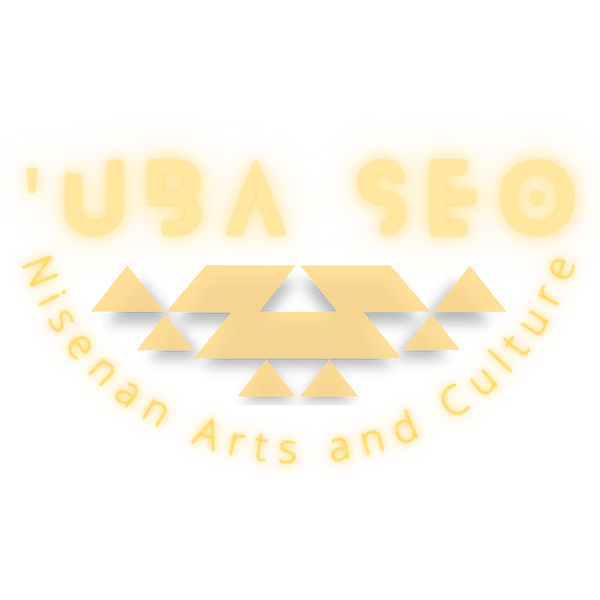
The Story of Land, Water, and People
The Story of Land, Water, and People
March 2024 - August 2025
With support from the Upstate California Creative Corps Grant, The Story of Land, Water, and People Exhibit built on the foundation of California Heritage: Indigenous Research Project (CHIRP)’s Visibility Through Art (VTA) initiative. This project coordinated collaborations among local artists and Tribal Culture bearers to increase public awareness and engage the public related to social justice, through the lens of environment-related issues including, land, water, and people. We are proud that this exhibit is funded in part by the California Arts Council, a state agency, through the Upstate California Creative Corps program, administered by Nevada County Arts Council.
The exhibition is the result of a journey the Tribe embarked on through a series of gatherings and workshops that centered on discussions about natural resources like water, passing on tradition, relationship to land, Tribal history, the Missing Murdered Indigenous Women’s (MMIW) movement, revitalizing Nisenan Language, and intergenerational trauma. The eight-month exchange resulted in the creation of paintings, drawings, beadwork, film, sculpture, and a three-wall indoor mural.
In addition, five non-Nisenan artists collaborated individually with CHIRP on artworks to create respectful and reflective works. These conversations come to light in this exhibition by utilizing art as the conduit.
Visibility Through Art is a community art initiative produced annually as part of CHIRP's Arts and Culture Program. Visibility Through Art is an intentional and informed collaboration between local artists and members of the Nevada City Rancheria Nisenan Tribe. Each project year explores a theme or subject of importance to the Tribe, culminating in an annual exhibit. You can learn more about VTA here.
EXHIBITING:
Nevada City Rancheria Nisenan Tribal Member Artists: Shelly Covert, Ginger Covert, Lorena Davis, Sarah Thomas, Cindy Buero, Debra McBrien, Saxon Thomas
Native | Nisenan Special Guest Artists: Tiffany Adams and Deerstine Madrone Suehead
Participating Artists: Nikila Badua, Ruth Chase, Maile Claire, Mira Clark, Jan-Michelle Sawyer


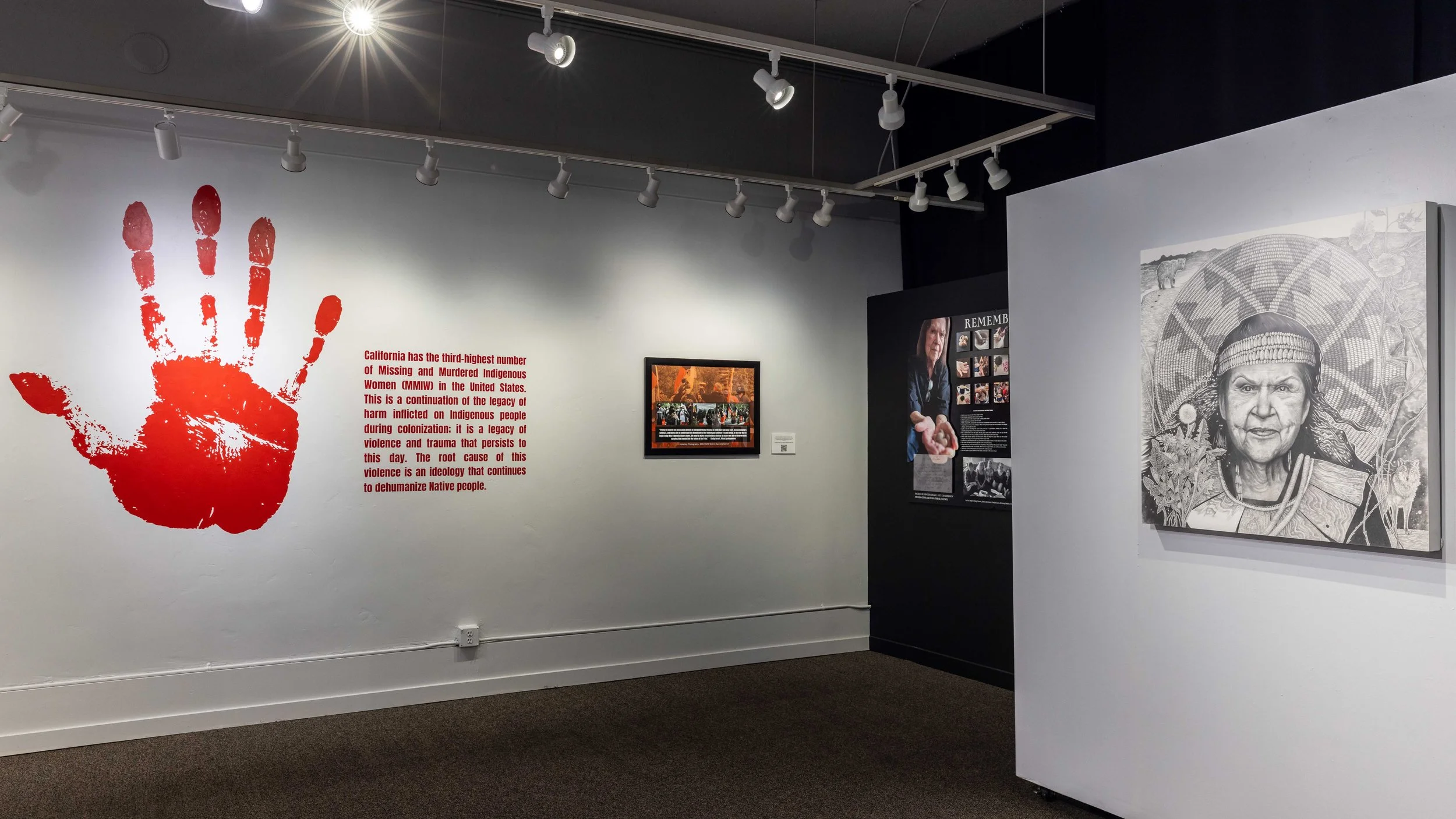
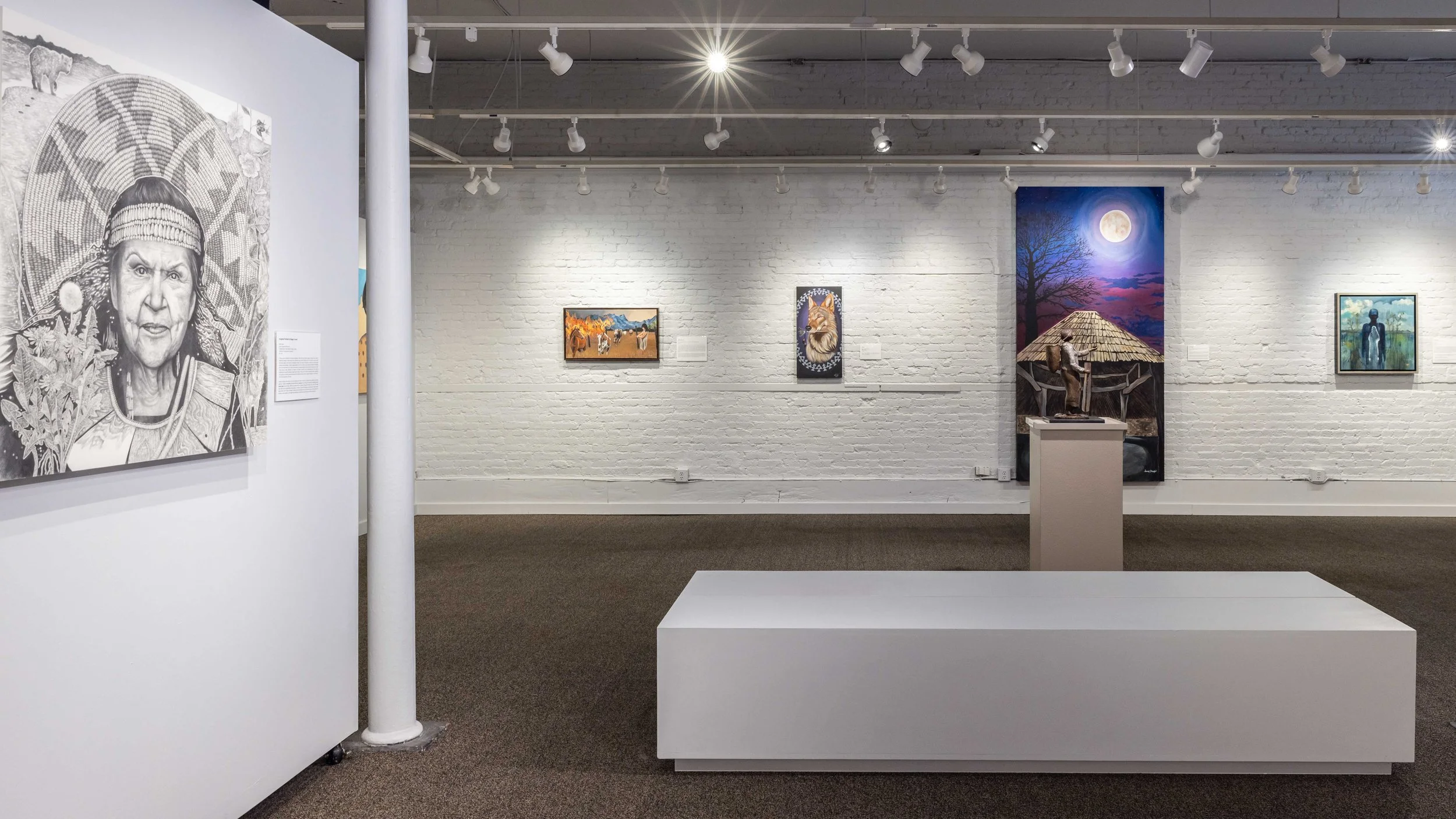
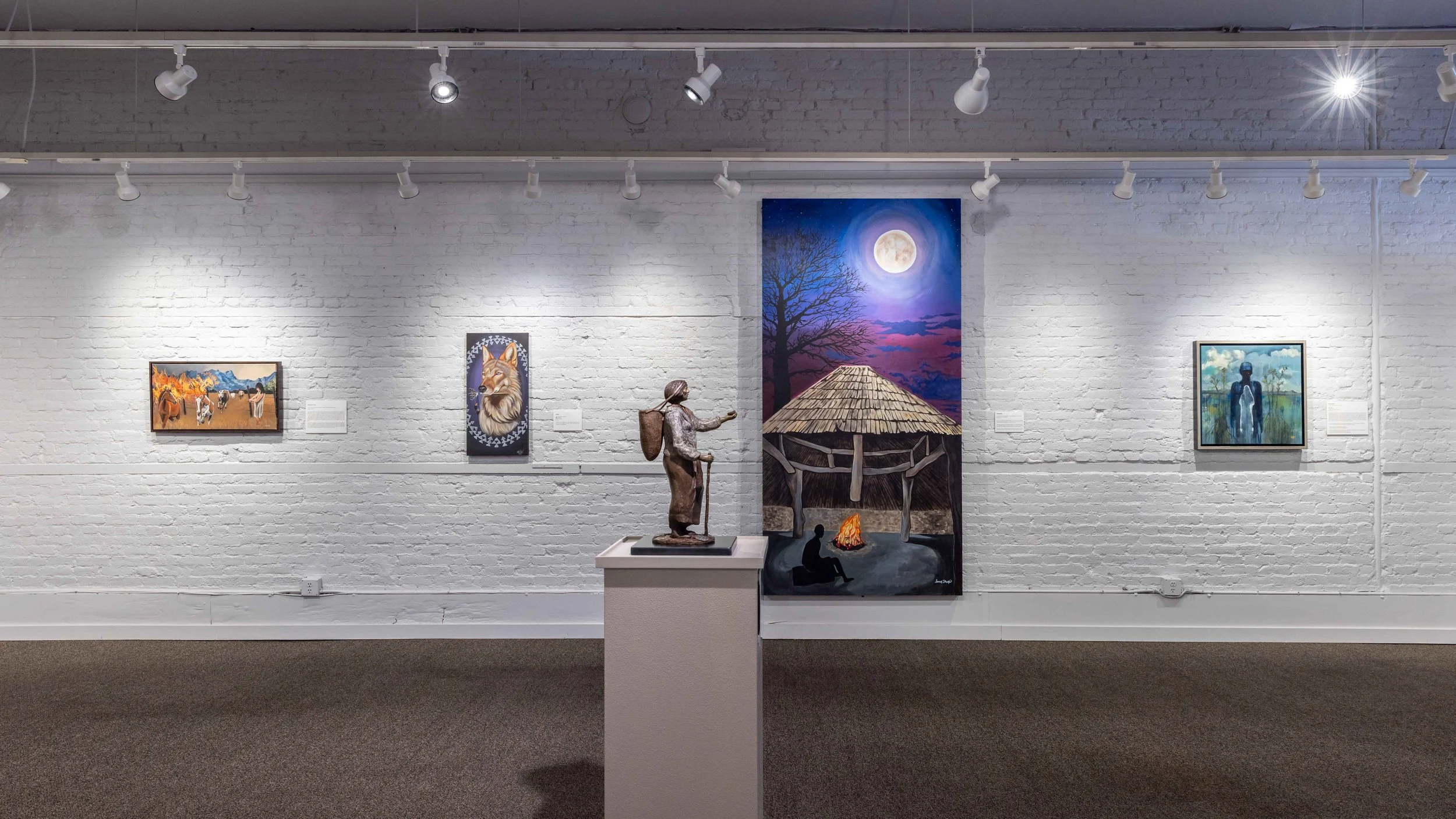
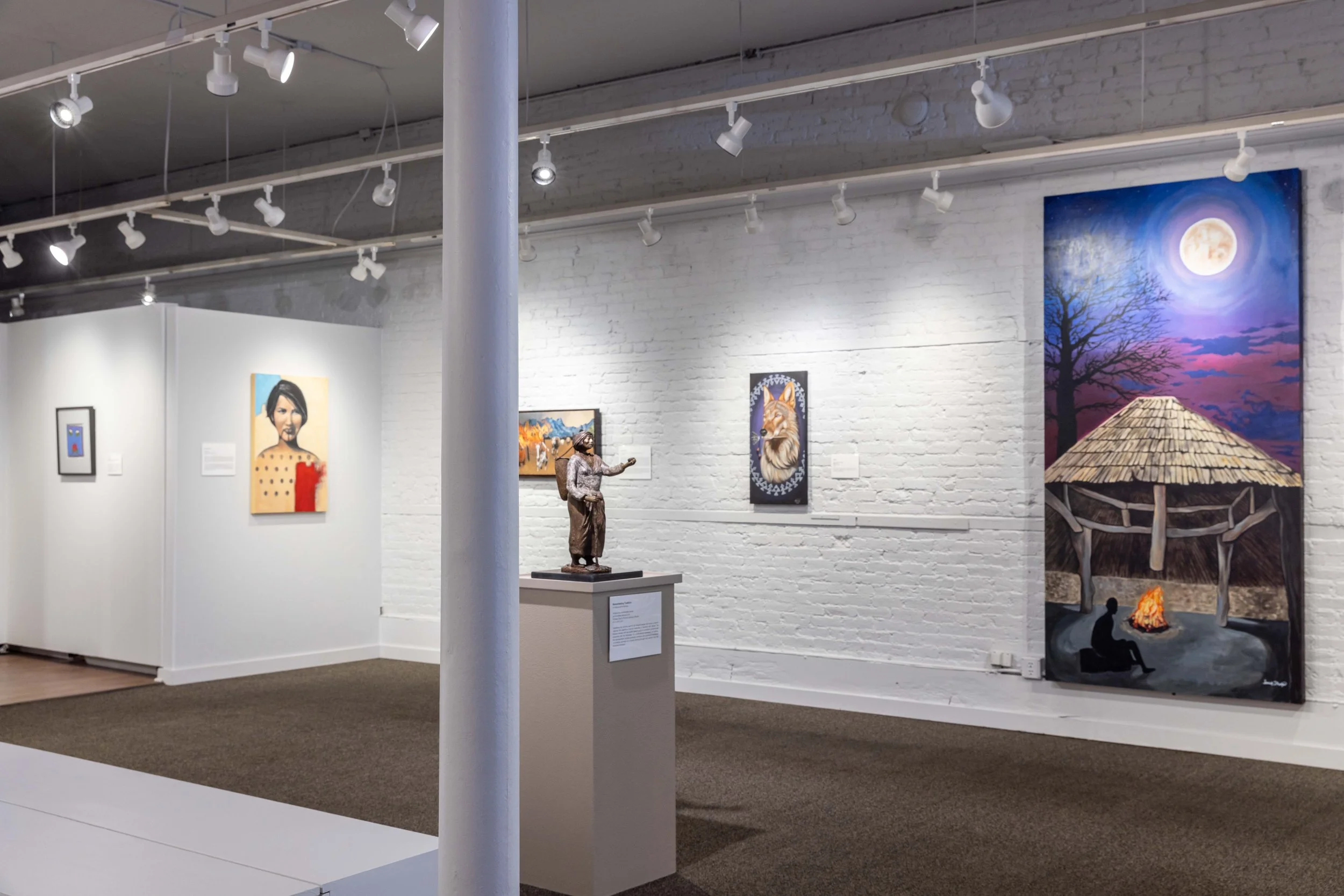
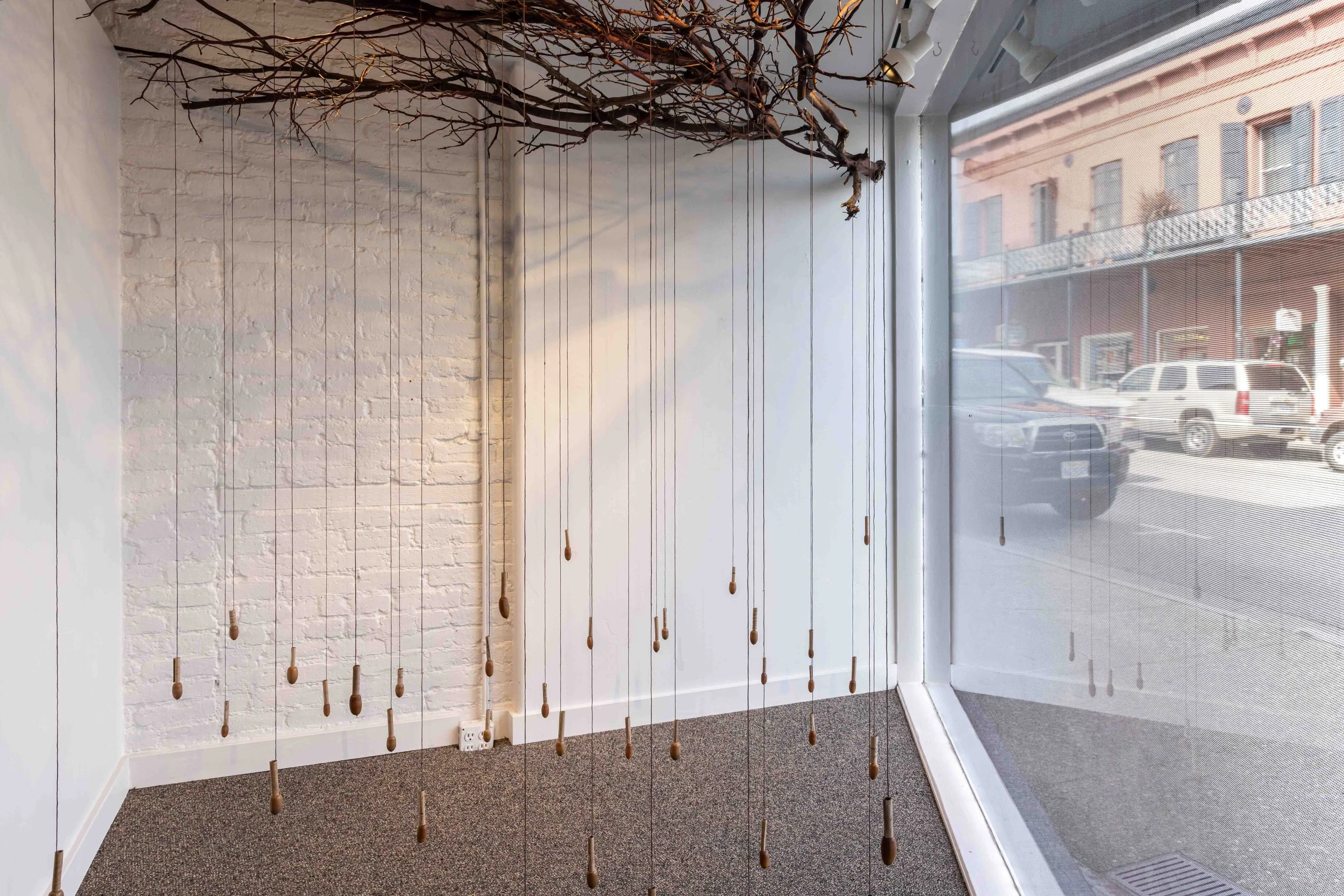
The Etymology Of The Land Mural at ‘Uba Seo







This mural highlights the Nisenan language, supporting the Nevada City Rancheria Nisenan Tribe's language revitalization efforts. Nisenan plant and animal names, written for the first time in the Tribe's new orthography, are prominently displayed. Special thanks to linguist Benjamin Joeng.
The Mural was designed by Indigenous artist Nikila Badua and Tribal Members. It is another phenomenal work of art by Badua we are proud to call her a CHIRP Board Member and excited we had the chance to collaborate with her on a second mural, the first being the Solim Ni - I Sing Mural, at 309 Neal St. Grass Valley, CA
We appreciate all the hands that brought this mural to life: Nikila Badua, Saxon Thomas (Tribal Member), Mira Clark, Iona Swift, Chris Harbour, William Douglas, and Sarah Coleman.
The above mural and gallery photography by Kat Alves for MUSE publication.
Gallery
"The Wash" Cindy Buero, (Nevada City Rancheria Nisenan Tribal Member) Acrylic and Oil-based Paint on Canvas, 24 x 24"" ________________________________________ “The gold rush significantly influenced the history of California and the United States. For us, the Nisenan, it meant genocide. Before the gold rush, thousands of Nisenan people hunted, fished, and took care of each other here, right here. This was and still is our Homeland. What is now the Yuba River, was once ˀuƀa seo, and Nevada City was known as ˀustomah. Changes were being made. In certain areas, restrictions were put in place, to keep the Nisenan from hunting and fishing; so there was hunger. The uninvited brought diseases and weapons that had never been seen before. The uninvited brought death. My piece is called, The Wash. In mining, the wash is when they separate the gold from the tailings. The good stuff from the bad. And so the story goes...”
"Patterns of Life" Lorena (Rose) Davis, (Tribal Council Elder - Nevada City Rancheria Nisenan Tribe) Size 12 seed beads, applique style on felt, 8 x 8" ________________________________________ “Growing up, I remember, we would always have family and friends visiting. We were a close-knit family. Most of the time, we would visit over coffee at Mom's kitchen table. While visiting, we would do beadwork. We shared patterns, new projects, old memories, and our heritage; oh how I miss those days. I pray that our new generations will take an interest and seek wisdom from our heritage, especially, the wonders of nature, and everything our amazing planet provides for us. Please pause and look at the beauty all around us.”
"đappe" Deerstine Madrone Suehead, Instagram: @xmadrone, Acrylic on Canvas, 15 x 30" ______________________________________ Coyote and their significance in the Nisenan creation story are honored in this painting. He holds a flicker hair stick and is enveloped in a basket pattern.
"utim ċa" Debra McBrien (Nevada City Rancheria Nisenan Tribe) Watercolor on Paper, 28 x 35" _________________________________________ utim ċa, known today as an oak tree, was a foundational part of Nisenan daily life. utim ċa had a variety of uses that benefited the people. It was used to treat a variety of ailments and was also a key food source. Additionally, the Nisenan used all parts of the oak tree: the bark, leaves, and acorns were used medicinally; the wood was used to make a foot-drum in the Roundhouse; and the oak galls were commonly used to make dyes. The acorn from the black oak tree was a prized resource and was traded for other valued items that were not available locally. For example, abalone, seaweed, shells, obsidian, different foods, and medicine items were highly sought after by the Nisenan and the Tribe traded their acorn, deer meat, freshwater eels, hard-to-find basket materials, etc. Locally, specific acorn trees were maintained by specific families. Each family harvested what they needed and took care of the health of those trees spiritually, as well as, burning to clear away insects and harmful fungi.
"utim ċa" Debra McBrien (Nevada City Rancheria Nisenan Tribe) Watercolor on Paper, 17 x 21"
"Memories of Fire" Lorena (Rose) Davis (Tribal Council Elder - Nevada City Rancheria Nisenan Tribe) Acrylic on Canvas, 30 x 16" ________________________________________ “This picture depicts a memory I have of my mother telling me of an event when she was 15 years old. A larger wildfire broke out at Standfield Hill where she was living with her Auntie and two old Indian ladies. The fire was getting very close so my mother put the women in the creek and covered them with wet blankets while she and a friend tried to help carry water to put out the fire. My mother noticed a field fenced with barbed wire where horses and cows were trapped in a frenzy. Mom ran to the fence and started cutting. All of a sudden, she realized she could be trampled. She said the animals started running through the cut fence. Miraculously, they went right around her. A few days later she went back to that area, she said it was sad because the animals that couldn’t make it out were hanging from the fence dead. This moment might pale in comparison to the catastrophic fires we face today. With the privatization of land and the countless fences that come with it, we disrupt and diminish the natural environment and wild landscape. Had my mom not been able to cut the fence that day who knows how many more animals would have perished? It was important for me to tell this story as a part of this exhibit. All of the elements of Land, Water, and People felt alive in this memory from my mother.”
"Imaginal Portrait of Ginger Covert" Maile Claire, www.junipertreeoflife.com, Graphite on Ampersand Clayboard, 36 x 36” _________________________________________ In this portrait, Nevada City Rancheria Nisenan Tribal Elder and Culture Keeper, Ginger Covert wears a traditional abalone shell necklet and freshwater clam shell strands over her shoulder, denoting both individual station and Cultural sovereignty. Ginger also wears a headpiece crafted from hand-shaped abalone shell pendants. Ginger’s regalia seem to be lit from within by her personal strength and stamina. She is the descendant of a Culture that existed in perpetual balance with nature for thousands of years. These pieces were informed by Ginger’s oral family histories, early photographs, and the creative collaborative process between Ginger and the artist. There are few artifacts remaining today, casualties of the gold rush when genocide became the state-sanctioned norm, ravaging Indigenous communities from the mountains to the sea. Woven through the portrait are four animals and plants chosen by Ginger for her affinity with these teachers. These are: jom đʉ (California Wildrose), westono (Grey Wolf), jo (California Dandelion), and the jomim kapa (Grizzly Bear). While this portrait was in creation, through the latter half of 2023, four new Grey Wolf packs established themselves in northern California, bringing the state total to eight known packs since 2015. May all erased Culture and bio-diversity return to the land. May we all be led by the wisdom, inner strength, and deep-time-traditions of the Nisenan that survive and thrive to this day.
"Remembering Tradition" For Nature and All Beings, Sculpture by Jan-Michelle Sawyer, jan-michellesculptures.com, Oil Base Clay to Finished Casting in Bronze, H17" x W5" x D3" _______________________________________ Inspired by the enduring spirit of the Nisenan people, this bronze sculpture captures the essence of female leadership in harmony with nature. The Nisenan woman, with her basket raised in gesture, symbolizes guidance and reciprocity with the landscape. In a contemporary expression of tradition, this representation radiates gratitude, reverence, and a profound connection—a timeless portrayal of a woman deriving strength and wisdom from her Ancestral Homeland.
"The Great Grizzly" Mira Clark, miraclark.com, Acrylic on Canvas and Gold Wrappers, 16 x 20" ________________________________________ Grizzlies lived in California for millennia enjoying a reciprocal relationship with Indigenous peoples. These great beings were revered and honored as both family members and respected teachers. This drastically changed in the mid-1800s as settlers saw the Grizzly as criminal competition. California had one of the densest populations of Grizzlies on the continent. The Great Grizzly Bears lived long lives, were at least 4.5 feet at the shoulder, and sometimes as tall as 11 feet when standing. Following settler colonization and the gold rush in 1848, the Grizzly was not only hunted and killed but also captured and used for sports fights. The “last” California Grizzly was seen near Yosemite in 1924, going extinct after decades of persecution and hunting bounties.
"I Remember" Sarah Thomas (Tribal Council Elder - Nevada City Rancheria Nisenan Tribe) Wooden Frame with Acrylic Paint, 4' x 8' x 2" _________________________________________ “This is one memory that my Dad shared with us and can now be passed down from generation to generation. To keep it alive, it's important to keep our verbal traditions going, to teach lessons and a way of life.” “Before he was taken away to Indian Boarding School, he remembers sitting in the Roundhouse when he was about six years old. The Tribe was holding Ceremony in the Roundhouse and the center pole rose up off the ground.” He said, “You know... that was before they had cranes or equipment that could lift something that heavy. What do you think about that, makes you wonder?”
"hu·tum kʉle" The Dreamers Show Us The Path, Ruth Chase, RuthChase.com, Acrylic, Wax on Canvas | Video, 24 x 24 x 2” ________________________________________ The painting is a culmination of a dialogue with Nevada City Rancheria Tribal Members who shared their historical knowledge of Nisenan Spirituality that can come through dreams. The painting depicts a dark figure, perhaps the Creator, or represents contact with the dream world. The outline of the lighter figure is from a photo of Lorena Davis and represents the dreamer. The figures hover over ˀuƀa seo (Yuba River), with the sky above, and the Ancestral Homelands of the Nisenan, ˀestom janim (Marysville Buttes) in the background. On the sides of the figures are herbs, as it would be common for the dreamer, or “Knock Down Person”, to return from the dream with the knowledge that would help the Tribe, such as special herbs for healing, a premonition about migration routes, or a warning. “In our culture, we are dreamers, where we learn new languages, and new things through our dreams.” - Saxon Thomas, Nevada City Rancheria Tribal Council, Member at Large “I believe that we are visited through our dreams. “ - Cindy Buero, Nevada City Rancheria Tribal Member “I was once visited by my late husband, John, who came to me in a dream to share a very important part of my future that helped me at a difficult time in my life.” - Lorena Davis, Nevada City Rancheria Tribal Council Member
"ḱauim seo" Saxon Thomas (Tribal Council Member - Nevada City Rancheria Nisenan Tribe) Spray Paint on Canvas, 17 x 21" _________________________________________ “I wanted this piece to represent reflections. An unfolding synchronicity into the heart of human behavior. A mirror to the choices we make. Just as the moon imparts her glow to the water, our energy and attention ripple out into the world, echoing back to us in whatever form we give it. How we treat each other and how we respect the environment will reflect back onto us. If we give negative energy to others we will receive negative energy back. If we are destructive to the earth, the earth in turn will be destructive to us. If all we show is violence, war, hate, and segregation, then that reflects on the youth, and the cycle never ends. If we can show trust, understanding, and compassion, we can represent these qualities and inspire others. By choosing to behave using the elements of love over the friction of fear we can help break the current cycle we’re in and forge a path towards a more harmonious future.”
"Savage Beauty" Tiffany Adams, tiffanyadamsartist.com, Acrylic on Canvas and Angelica Root Flour, 24 x 36" _________________________________________ Inspired by Lois Louise Potts, my mother. She has been the inspiration for many of my paintings and portraits because of her strength, resilience, and incredible poise, a trait honed by adversity and shared by so many women in my family. She was updated in 2024 with a cape of blackberries, referencing the food that sustained her and her siblings. As children, they gathered blackberries, along with strawberries, mushrooms, thimbleberries, and hazelnuts, with their grandmother, Starry Edwards Potts. The work was created in 2017 during major turning points within Native American politics, with Missing and Murdered Indigenous Persons going viral on social media, the Standing Rock movement, Charlottesville, and a rekindling of the “Pocahontas” trope in the media. Lois was born in Nevada City in 1941. She is the daughter of Leola Smith, who is the daughter of Lillian Rose, who is the daughter of Mary Ellen Potts, who is the daughter of Mary Ellen Tolly, and who is the daughter of great Nisenan huk (Headman), Pamlo.
"Painting With Oak Gall Ink" Instructor Artist: Jennifer Rain Crosby, Artworks by Tribal Members: Shelly Covert, Ginger Covert, Lorena Davis, Sarah Thomas, Cindy Buero, Debra McBrien, Saxon Thomas, _________________________________________ Artist Jennifer Rain Crosby led a group of Tribal Members in a class on how to create Oak Gall Ink and paint with it. Oak Galls are made of plant tissue and form when an insect (typically a wasp) secretes a chemical that causes interference with normal plant cell growth. This was an enriching way for the Tribe to paint with their native environment.
"Our Dreams and the Dreams of the Land Interweave" Photo by Kat Alves for MUSE Magazine _________________________________________ This window display is a web of Tribal Members' hopes, dreams, visions, and wishes that they have made for themselves and the Nevada City Rancheria Nisenan Tribe. These are written on the papers wrapped around the twine. Both Tribal Elders and Youth contribute to this vision of being tethered to the landscape. The Manzinita lends its strength to the vision. Tribal dreams are inextricable from a healthy and vibrant environment. Installation created by: Saxon Thomas, Mira Clark, Ruth Chase, and Tribal Members
A red hand over the mouth has become the symbol of a growing movement, the Missing and Murdered Indigenous Women (MMIW) movement. It represents the missing sisters, wives, mothers, and daughters whom justice has not served. It represents the silence of the media and the long-standing inaction by law enforcement amid this crisis.
Tribal Member “Pour Paint” Artworks, Exploring Intergenerational Trauma and MMIW Through Art, Instructor Artist: Jeree Waller , _________________________________________ Tribal Members were given the opportunity through expressive art therapy classes to explore the topics of intergenerational trauma and specifically MMIW. ------------------------------------------------------"To me, the red handprint represents the murdered Nisenan women and girls and their silenced voices.” - Lorena Davis ----------------------- “It reminds me of a stop sign, It also represents the blood of all the Natives that were killed. Everything was taken away from especially Nisenan woman, and their ability to pass things along to their children, such as, language, cooking, traditions, culture, and crafts. Their identity was taken away. It just happens, on almost every front. The violence was passed down through our DNA, and in our memories, and today we are experiencing intergenerational trauma.” - Ginger Covert
*TRIGGER WARNING* _________________________________________ During the gold rush, women in our Tribe resorted to filling themselves with river rocks as a desperate measure to deter rape and prevent pregnancies resulting from violence. This practice extended to protecting their very young daughters as well. When considering the rampant syphilis that plagued the era, one can begin to grasp the horrific reality of the violence they endured. “The land we occupy today is the very same ground on which these terrible crimes took place. We Californians are the beneficiaries of genocide. I suspect few Californians today contextualize their homes as sitting upon stolen land or land gained by bloody force or artful deceits, nor do they likely consider the social and political questions of present-day Native American affairs in this light.” — Brendan Lindsay, Murder State: California's Native American Genocide, 1846-1873
Tribal Member Quotes from: Intergenerational Trauma and MMIW Art Workshop, ________________________________________ “It is hard to put thoughts and feelings into words, my red handprint symbolizes the blood, and how the trauma has been passed down through our DNA. How today we are still trying to overcome it. Not only the women but the men and boys, that were not able to protect the ones they loved. The hurt and shame they must have felt, and the hopelessness.” - Sarah Thomas
2021 MMIW Walk in Sacramento, CA, Hoka Hey Photography, ________________________________________ "How can we speak of reciprocity and repair when atrocities continue? The perpetual cycle of harm, often unintentional, diverts energy needed for healing. Trying to resolve the devastating effects of intergenerational trauma is really hard and long work. Acknowledging it, seeing it, and being able to understand the dimensions of the violent past and how it exists today, is the only way to begin to lay this traumatic history down. We need to make conscientious choices to ensure we are not inadvertently carrying this trauma into the future of the Tribe. - Shelly Covert, Tribal Spokesperson
Tribal Member Quotes from: Intergenerational Trauma and MMIW Art Workshop, ________________________________________ “The generational trauma is still very strong with nearly all our Tribal members. We had parents and grandparents taken away from their families and placed into adoptive care, or sent away to Indian Boarding Schools where we have lost Tribal members and where my own grandpa ran away multiple times while getting caught and being taken back. All the forms of violence against our Tribal women and members happened and continue to happen to our Tribe, this keeps you in a vicious circle of shame, hate, guilt, depression, anxiety, and a lot of the time leads to substance abuse and poverty.” - Saxon Thomas
Tribal Elder Ginger Covert created a project and presentation around the Native acorn resource. ________________________________________Our Culture and Traditional lifeways require an understanding of - and access to - natural resources, such as the acorn, when those traditions become disrupted, so too does our Culture.
Opening Night
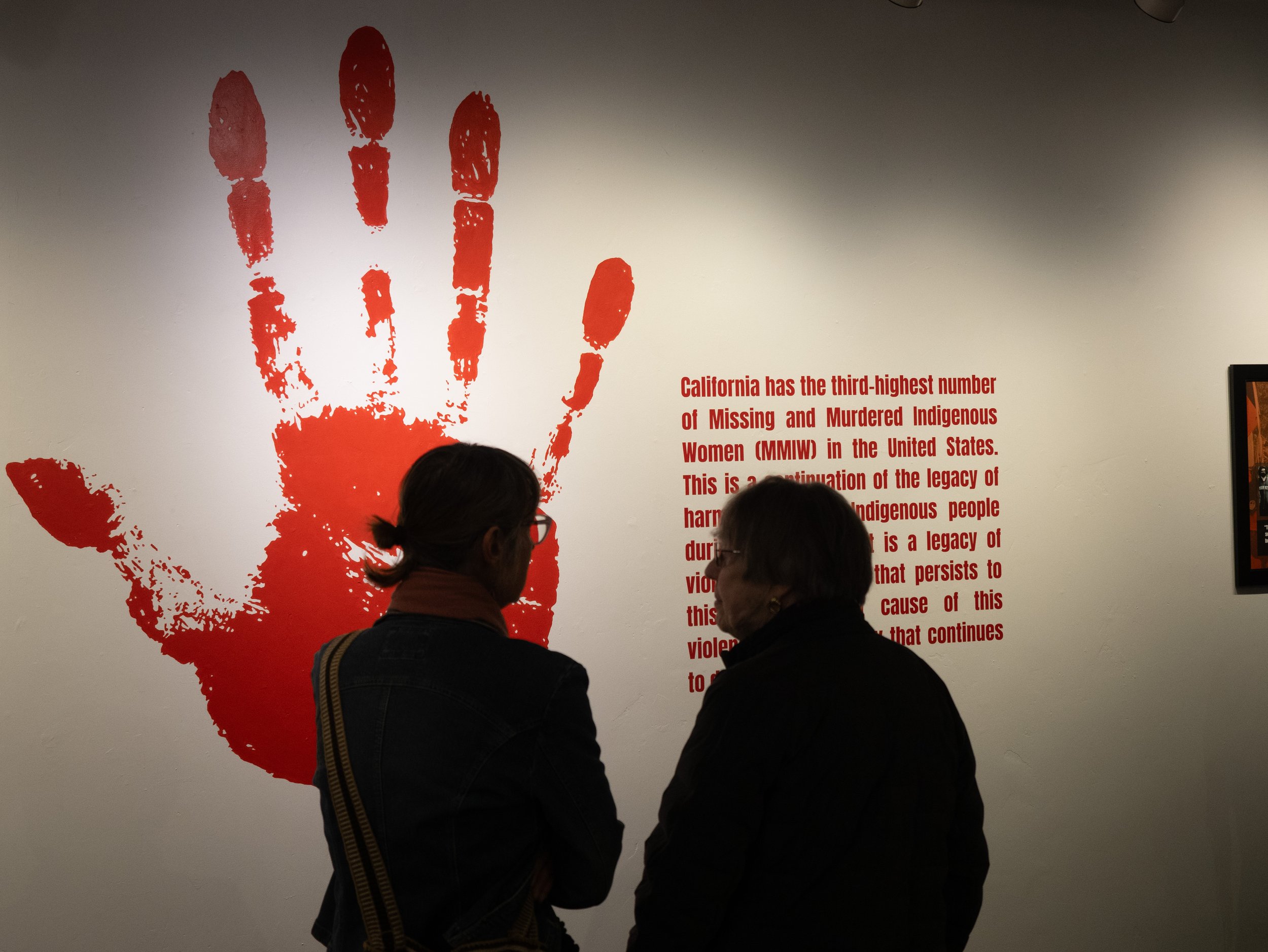
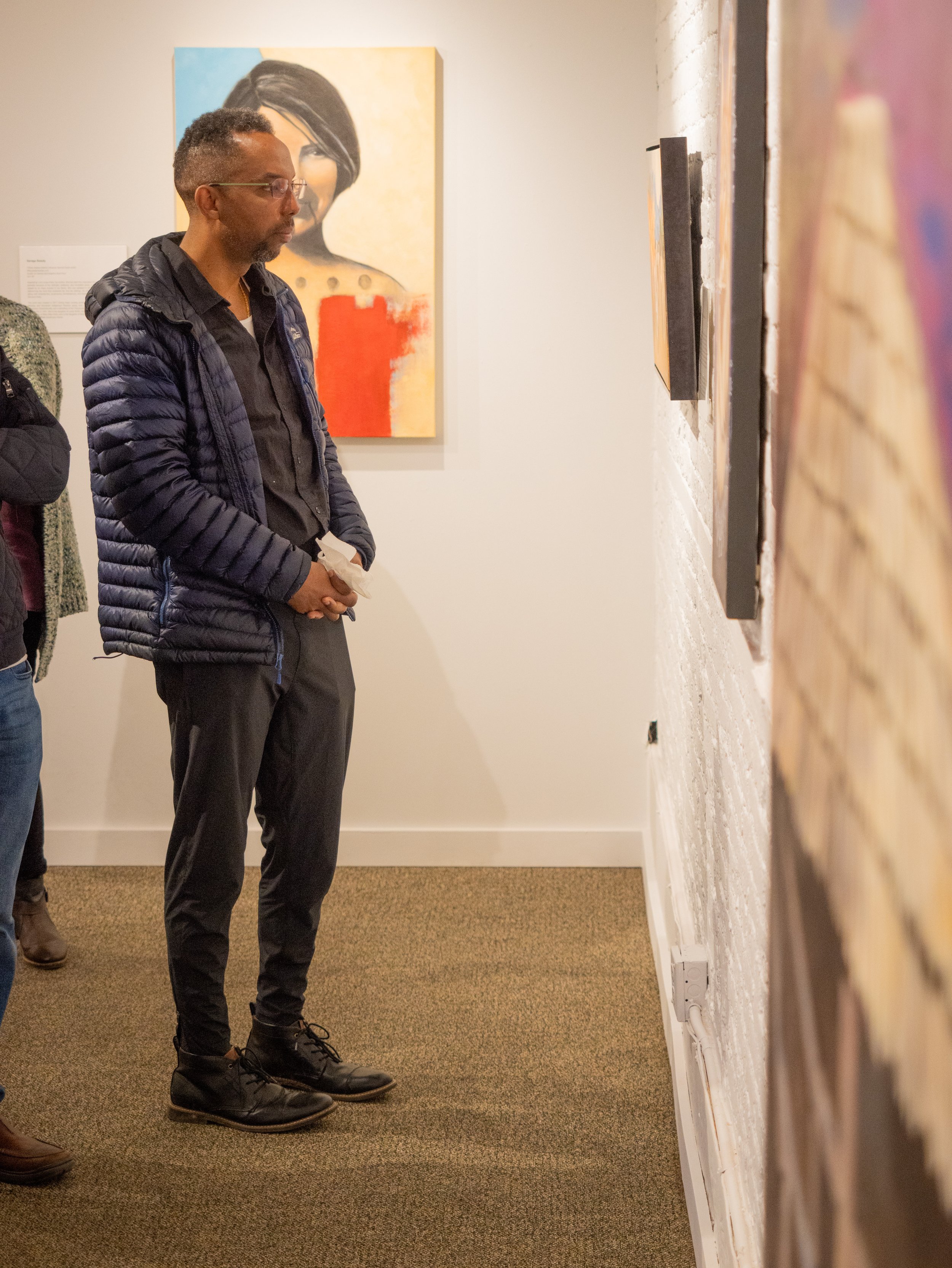

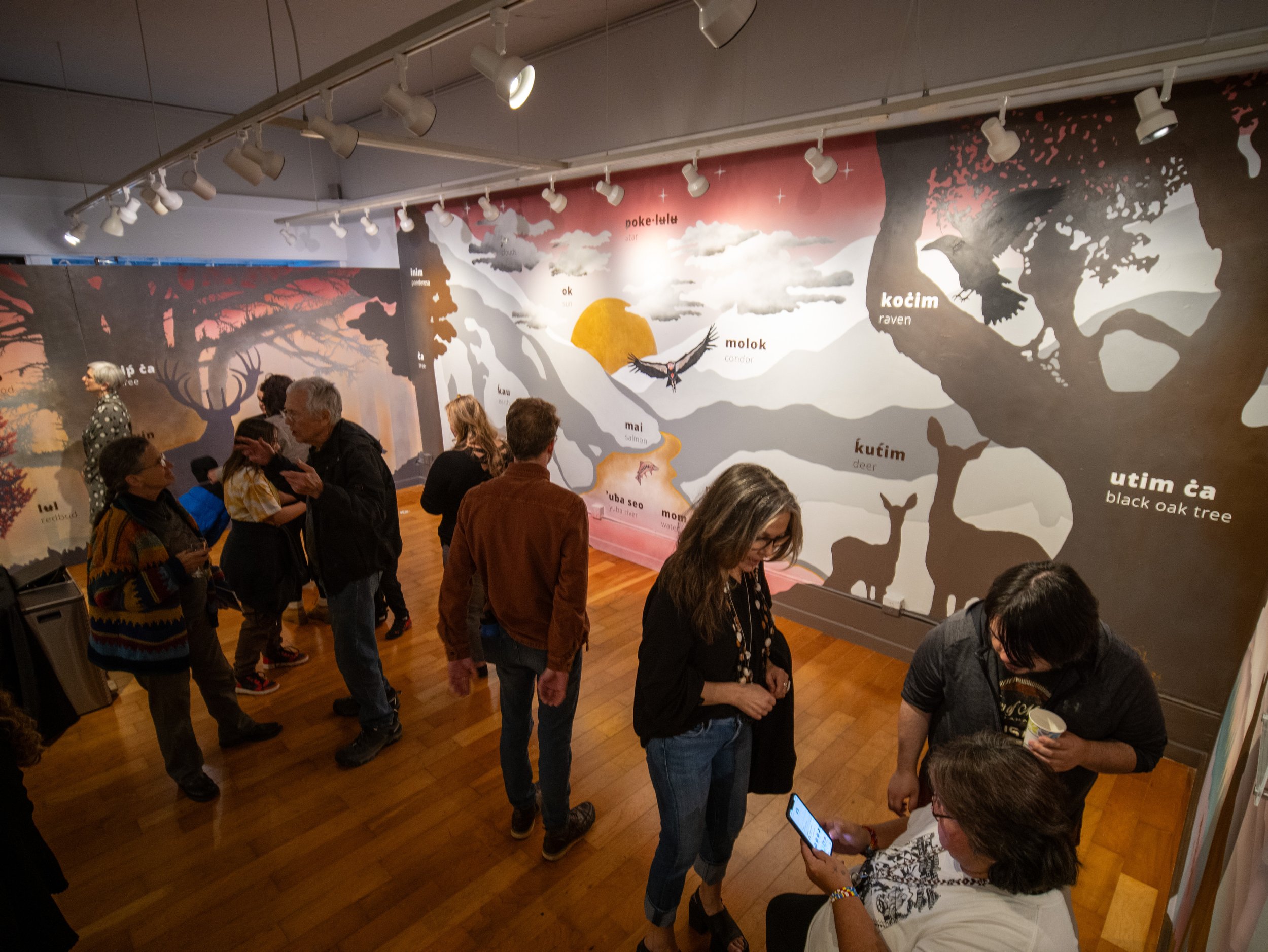

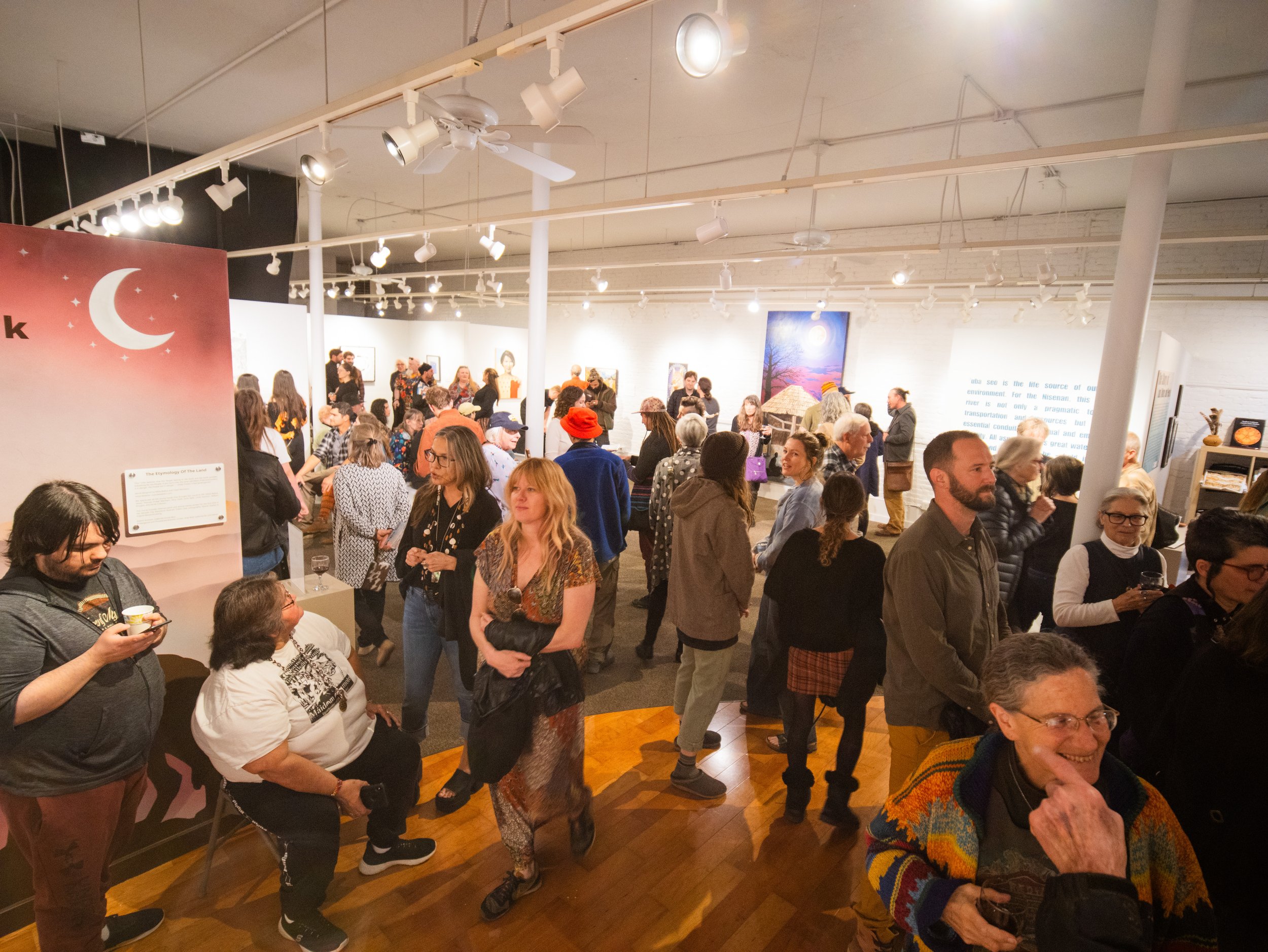
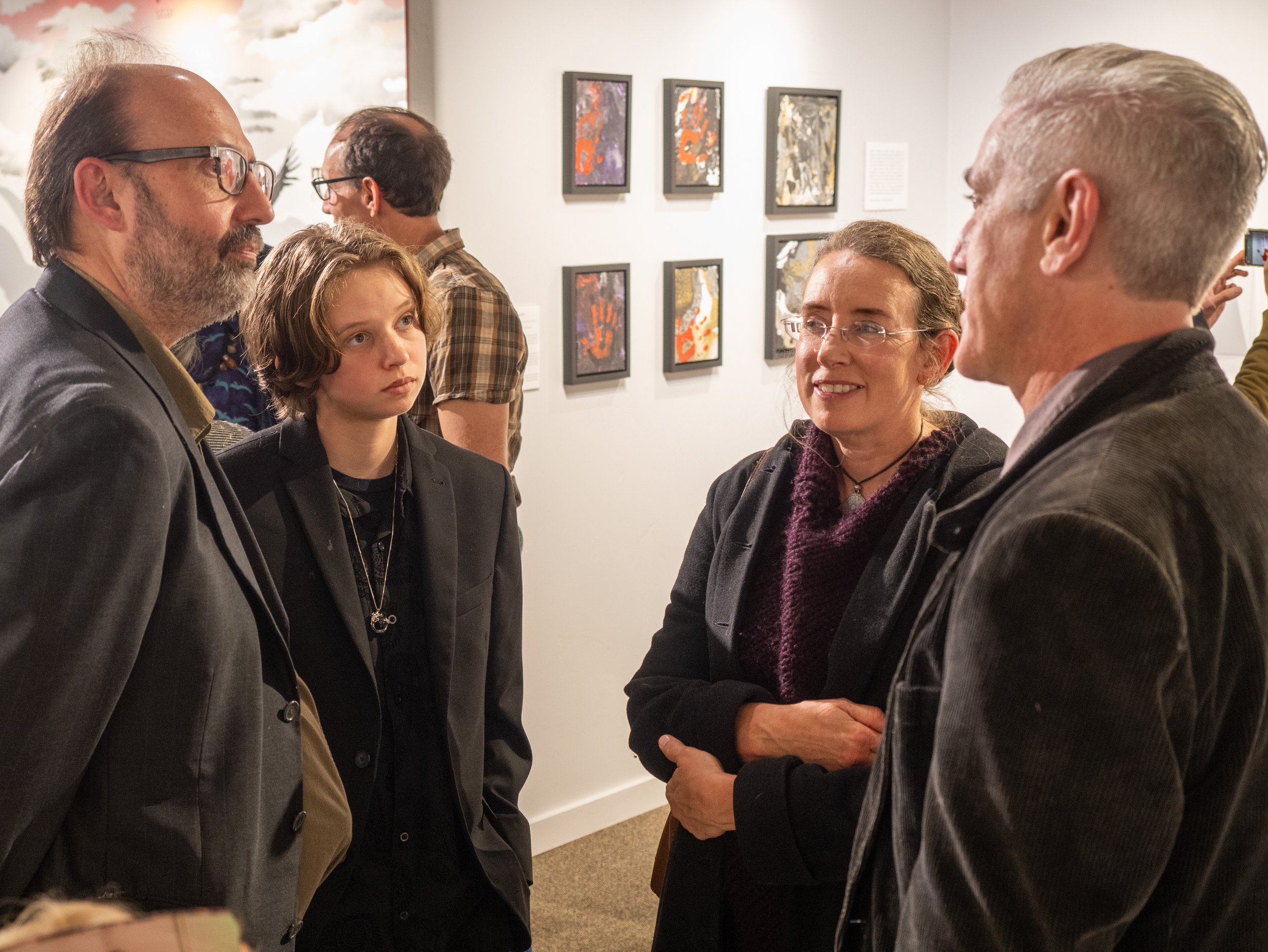
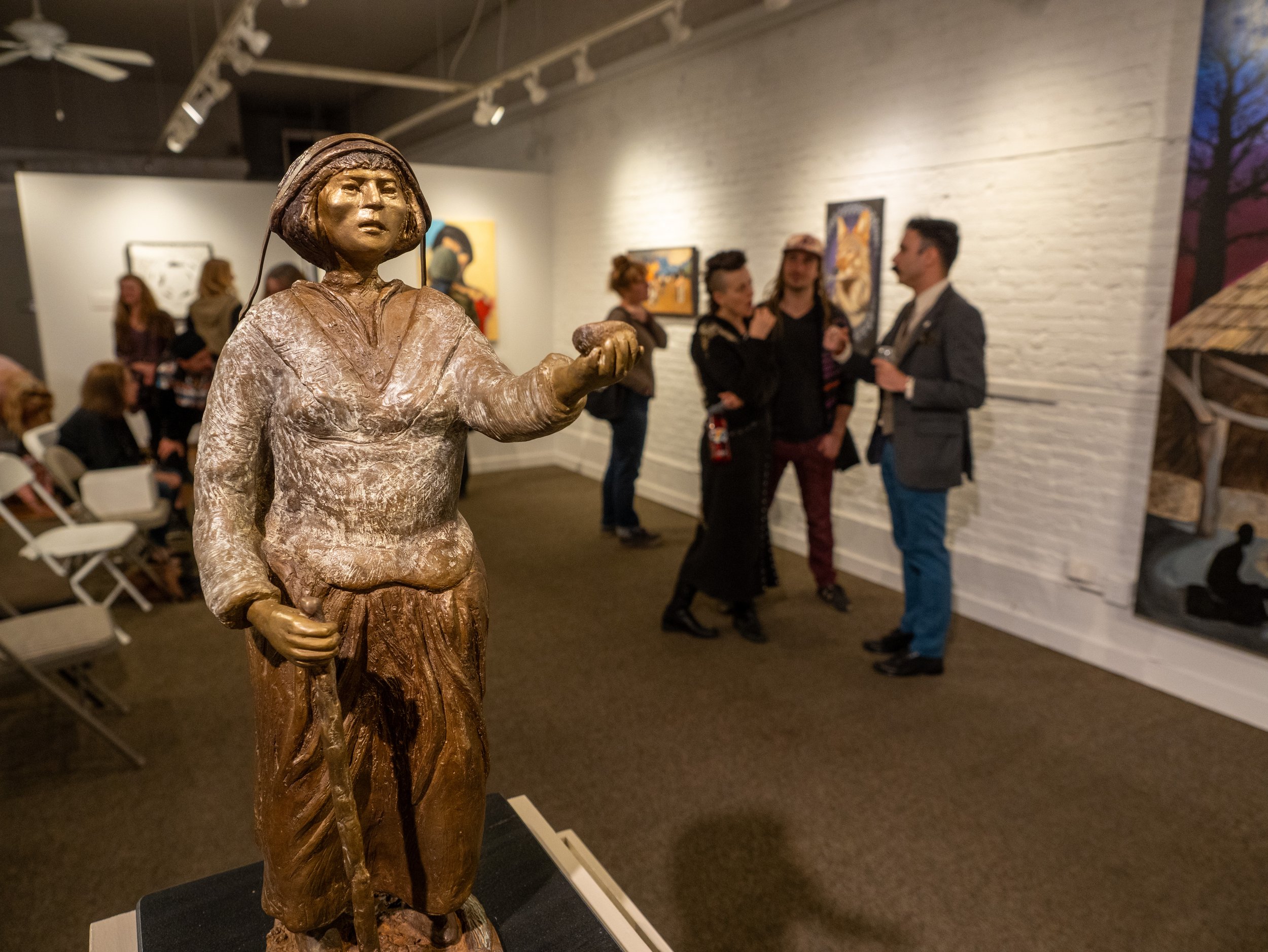
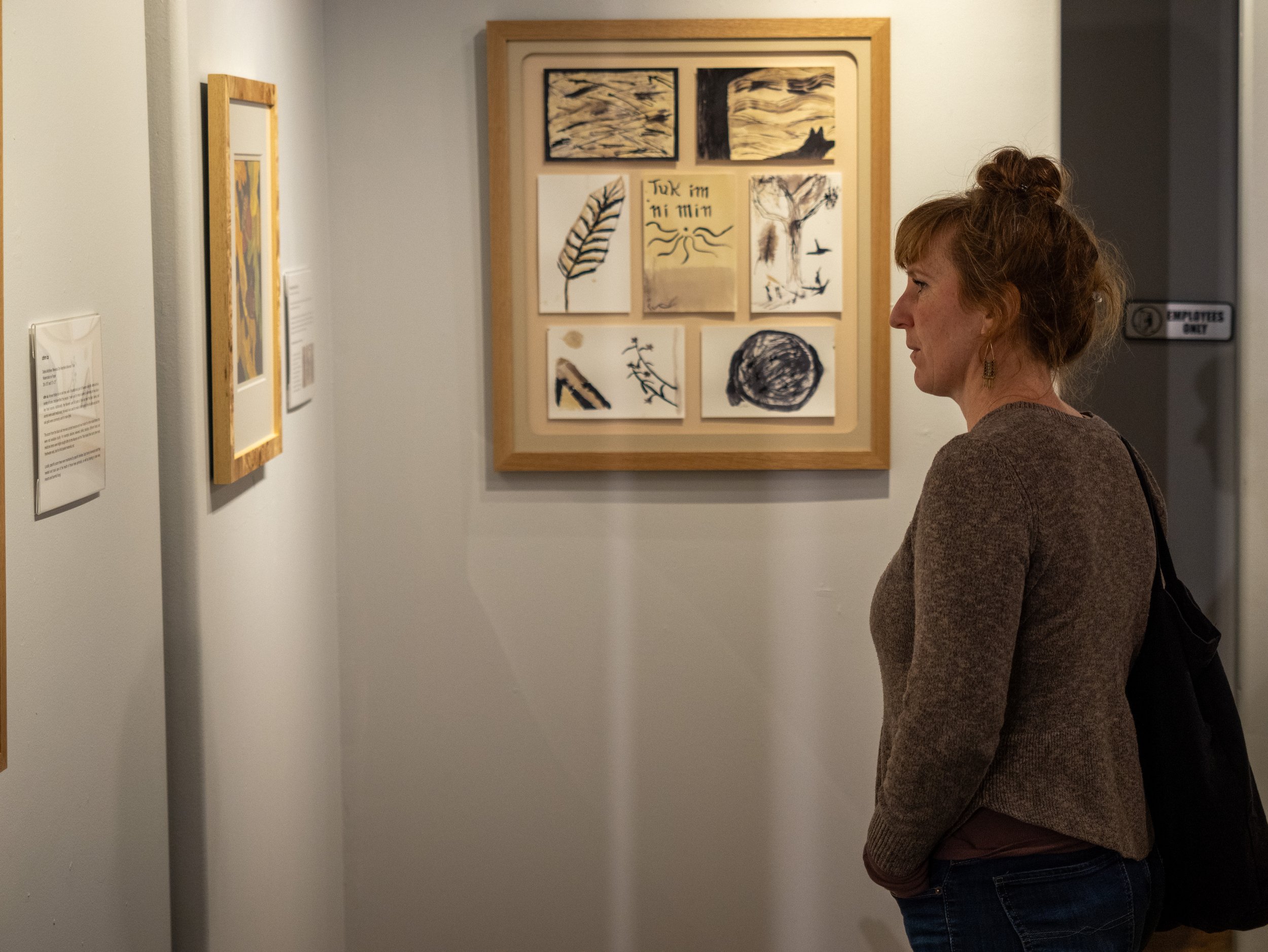




Special Thanks to Event Photographer Kit Kohler and Art Photographer Robert Bryant
